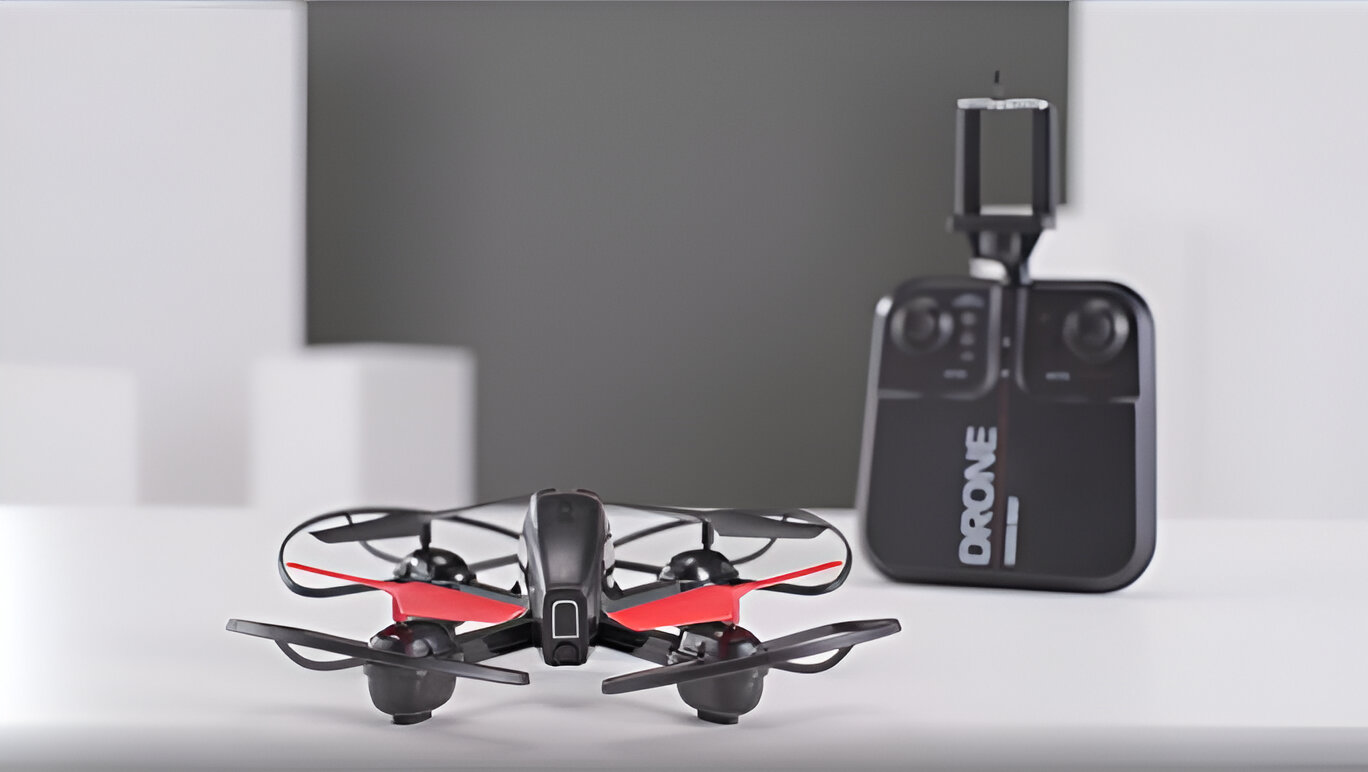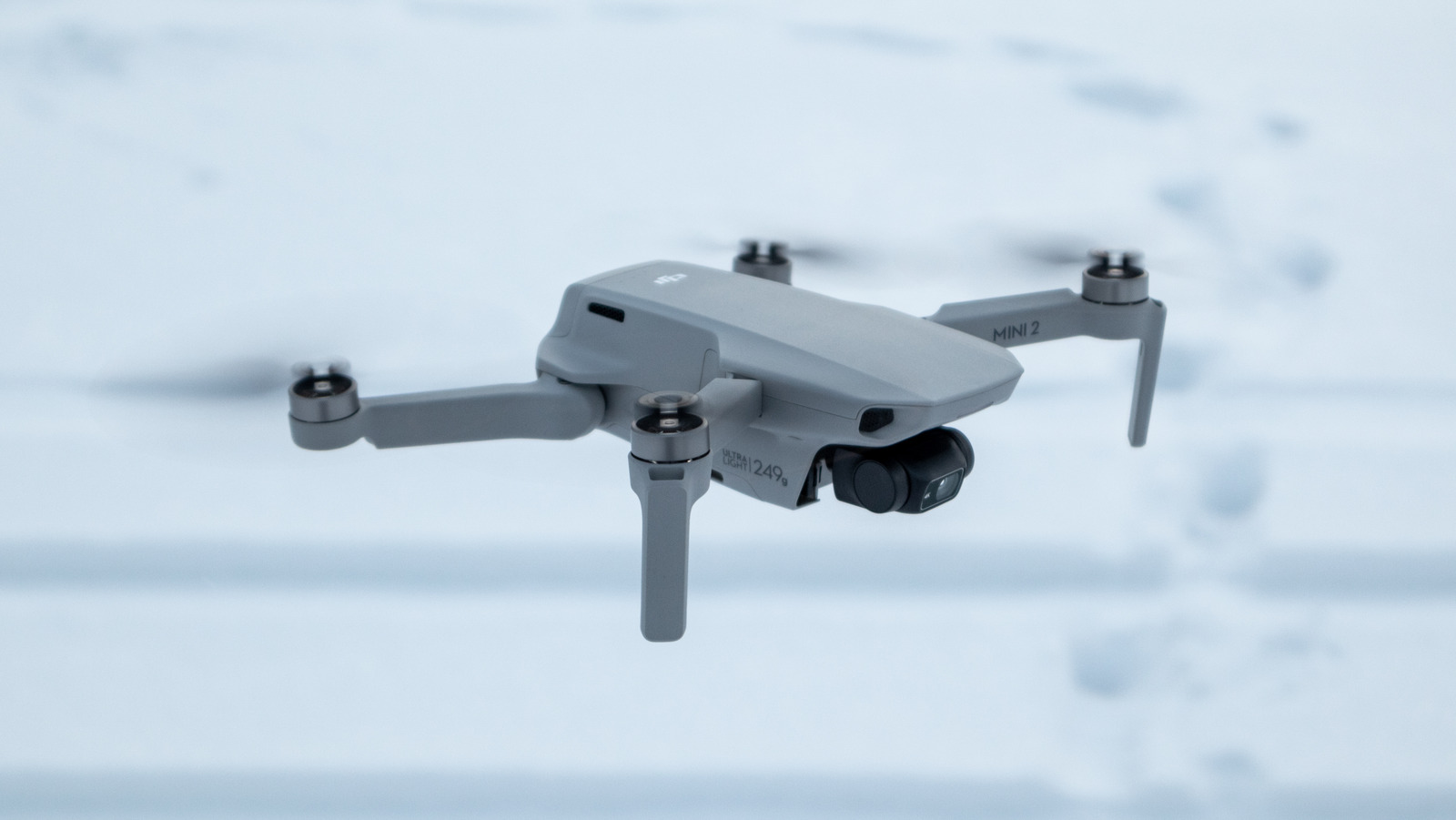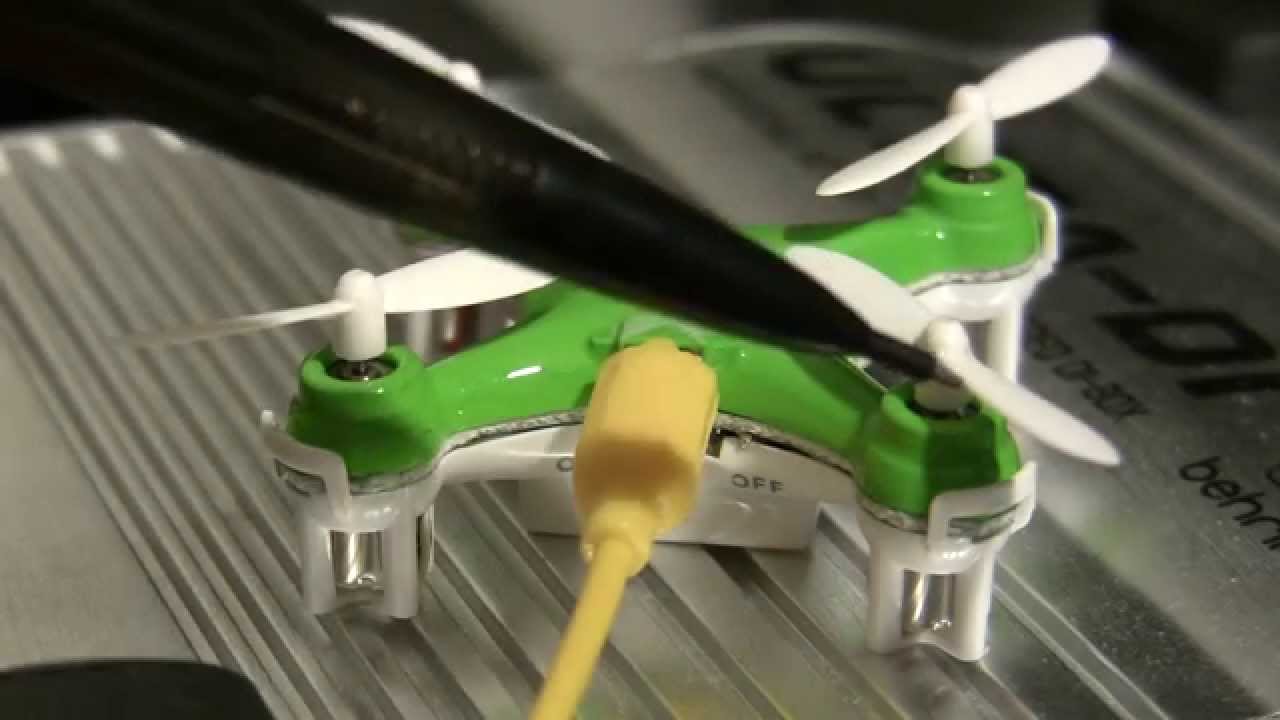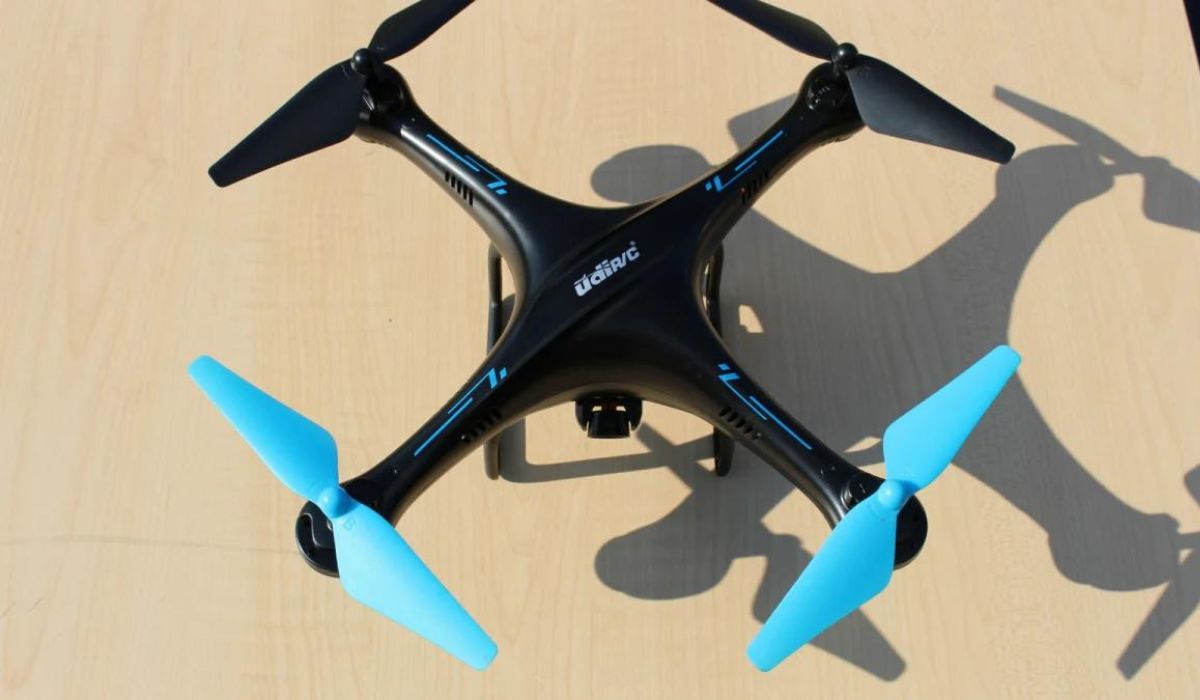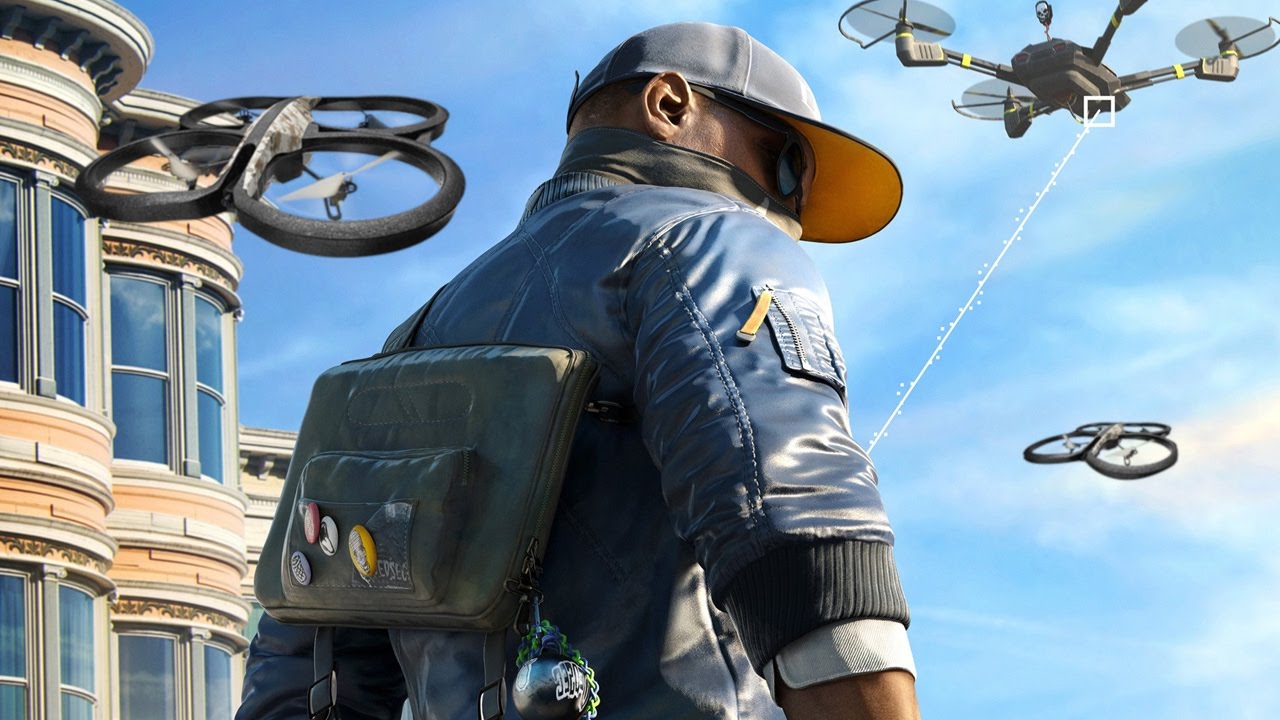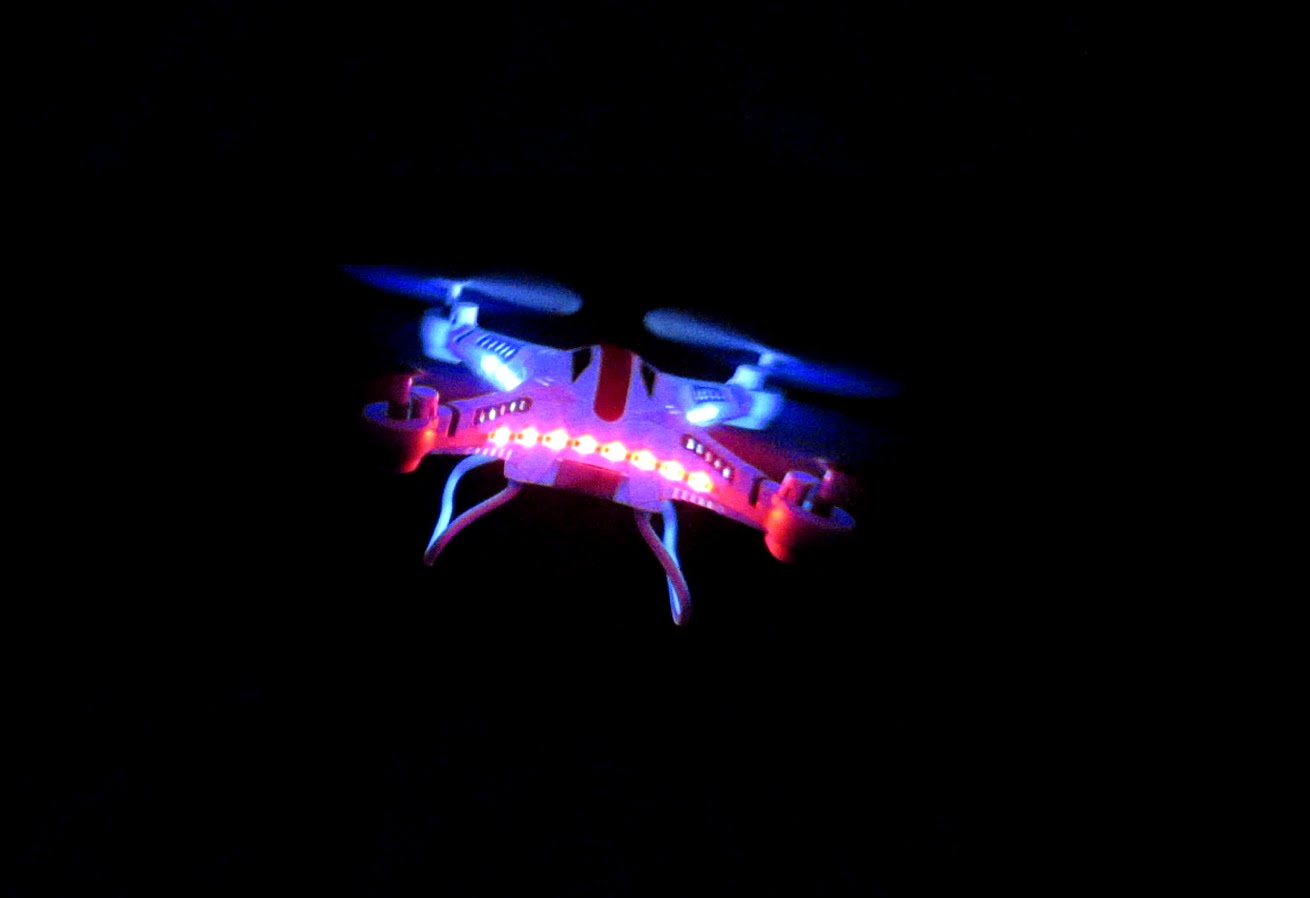Introduction
Welcome to the exciting world of camera drones! These remarkable devices have revolutionized the way we capture stunning aerial footage and have opened up endless creative possibilities for photographers, videographers, and hobbyists alike. Whether you're a seasoned professional or a curious beginner, learning how to use a camera drone effectively can elevate your photography and videography to new heights – quite literally!
In this comprehensive guide, we will delve into the essential aspects of using a camera drone, from mastering the controls to capturing breathtaking aerial shots. By the end of this journey, you will be equipped with the knowledge and skills to confidently operate a camera drone and unleash your creativity in the skies.
So, buckle up and get ready to embark on an exhilarating adventure as we explore the art and science of using a camera drone to capture awe-inspiring imagery and footage. Whether you're drawn to the mesmerizing beauty of landscapes, the thrill of action sports, or the allure of urban cityscapes, a camera drone is your ticket to experiencing the world from a breathtaking new perspective.
Join us as we navigate through the intricacies of piloting a camera drone, uncover the secrets of capturing compelling aerial photos and videos, and discover the safety measures essential for responsible and enjoyable drone operation. By the end of this guide, you'll be well on your way to becoming a proficient camera drone pilot, ready to unleash your creativity and capture the world from a whole new angle. So, without further ado, let's soar into the captivating realm of camera drones and unlock the potential of aerial photography and videography.
Getting Started with Your Camera Drone
Before taking to the skies, it’s crucial to familiarize yourself with your camera drone and its components. Start by carefully unpacking the drone and its accessories, ensuring that all items are present and undamaged. Read through the user manual provided by the manufacturer, as it contains vital information about setup, operation, and safety guidelines.
Next, familiarize yourself with the drone’s physical features, including the propellers, motors, camera, and battery compartment. Understanding the layout and functionality of these components is essential for safe and efficient operation. Take the time to charge the drone’s batteries fully and, if necessary, install fresh batteries in the remote controller.
Once your drone is charged and ready, find an open, unobstructed area for your first flight. Avoid flying near airports, crowded spaces, or restricted zones. Additionally, check the weather conditions and ensure that it’s suitable for flying – calm winds, clear skies, and good visibility are ideal for beginners.
With your drone and controller powered on, establish a stable connection and perform a pre-flight check to verify that all systems are functioning correctly. This includes ensuring that the GPS signal is strong, the camera is operational, and the drone’s motors respond appropriately to the controller’s commands.
Lastly, it’s essential to register your drone with the relevant aviation authority and familiarize yourself with local regulations regarding drone operation. Understanding the legal and safety considerations associated with flying a camera drone is crucial for responsible and lawful piloting.
By taking these initial steps and acquainting yourself with the fundamentals of your camera drone, you’ll set the stage for a smooth and enjoyable flying experience. With a solid grasp of the drone’s features, proper setup, and adherence to safety protocols, you’ll be ready to embark on an exciting journey of aerial exploration and creative expression.
Understanding the Controls
Mastering the controls of your camera drone is fundamental to operating it effectively and safely. The remote controller, also known as the transmitter, serves as your command center for maneuvering the drone and capturing aerial footage. Understanding its layout and functions is essential for navigating the skies with confidence.
Typically, a drone controller features two joysticks – one for altitude and rotation (yaw), and the other for forward, backward, and lateral movement (pitch and roll). Familiarize yourself with these controls and their corresponding movements, as they dictate the drone’s flight path and orientation. Additionally, the controller may include buttons for activating the drone’s intelligent flight modes, adjusting camera settings, and initiating automatic return-to-home functions.
Furthermore, many camera drones are equipped with GPS and stabilization systems, allowing for precise positioning and steady flight. Understanding how these features integrate with the controller inputs is crucial for maintaining stability and capturing smooth, professional-quality footage.
Before taking your drone on its maiden flight, spend time practicing in a controlled environment to become accustomed to the controller’s responsiveness and the drone’s behavior. Start with gentle movements to familiarize yourself with the controls’ sensitivity and gradually progress to more complex maneuvers as your confidence grows.
Additionally, familiarize yourself with the feedback provided by the controller, such as on-screen telemetry data and indicator lights. These visual cues can convey vital information about the drone’s status, battery level, and GPS signal strength, empowering you to make informed decisions during flight.
By gaining a thorough understanding of the controller’s layout, functions, and the drone’s response to your inputs, you’ll be well-equipped to navigate the skies with precision and capture breathtaking aerial imagery. With practice and a keen understanding of the controls, you’ll unlock the full potential of your camera drone and unleash your creativity from a captivating new perspective.
Pre-flight Checklist
Before each flight, it’s essential to conduct a thorough pre-flight checklist to ensure the safety and optimal performance of your camera drone. By systematically reviewing key components and confirming critical settings, you can minimize the risk of malfunctions and enhance the overall flying experience.
Begin by inspecting the physical condition of the drone, including its propellers, motors, and body. Look for any signs of damage, wear, or debris that may impede the drone’s operation. Ensure that the propellers are securely attached and free from any obstructions, as they play a pivotal role in generating lift and stability during flight.
Next, check the battery level of both the drone and the remote controller. A fully charged battery is essential for a successful flight, so verify that the batteries are adequately charged and securely installed. Additionally, confirm that the drone’s firmware is up to date, as manufacturers often release updates to improve performance and address potential issues.
Verify the functionality of the drone’s safety features, such as return-to-home functions and obstacle avoidance systems, if applicable. Testing these features in a controlled environment can provide reassurance and prepare you for unexpected scenarios during flight.
Inspect the GPS signal strength and confirm that the drone has acquired an accurate satellite lock. A strong GPS signal is crucial for stable flight, precise positioning, and the activation of intelligent flight modes that rely on satellite navigation.
Lastly, familiarize yourself with the local airspace regulations and any temporary flight restrictions that may be in place. Checking for updates on airspace conditions and potential hazards, such as nearby construction or events, can help you plan a safe and compliant flight route.
By diligently adhering to a pre-flight checklist and addressing any identified issues or concerns, you’ll establish a foundation for safe, reliable, and enjoyable drone operations. Embracing a proactive approach to pre-flight preparations not only enhances the safety of your flights but also instills confidence in your ability to navigate the skies with precision and responsibility.
Basic Flying Techniques
Mastering the fundamental flying techniques is essential for piloting a camera drone with confidence and precision. Whether you’re embarking on your first flight or refining your skills as an experienced pilot, understanding the basics of drone maneuvering is crucial for capturing stunning aerial footage and ensuring safe operations.
Begin by familiarizing yourself with the drone’s flight modes, such as GPS mode, altitude hold, and manual mode. These modes offer varying degrees of stability and control, allowing you to adapt to different flying conditions and photography requirements. GPS mode, for instance, utilizes satellite positioning to maintain a stable hover and precise flight path, while manual mode affords greater agility and responsiveness for dynamic maneuvers.
Practice hovering the drone at different altitudes and maintaining a steady position, as this skill forms the foundation for capturing clear and stable aerial photos and videos. Learning to hover effectively enables you to frame your shots with precision and capture captivating imagery from unique perspectives.
Experiment with basic flight maneuvers, including forward and backward movements, lateral shifts, and gentle turns. Gradually increase the complexity of your maneuvers as you become more proficient, and pay close attention to the drone’s response to your inputs. Developing a nuanced understanding of the drone’s handling characteristics is pivotal for executing smooth and controlled flights.
Furthermore, practice flying in different weather conditions and wind speeds to enhance your adaptability and confidence as a pilot. Understanding how environmental factors influence the drone’s behavior and stability is crucial for safe and successful flights, especially when capturing footage in diverse outdoor settings.
Finally, familiarize yourself with emergency procedures and practice initiating a safe return-to-home sequence in the event of signal loss or low battery levels. Being prepared to respond to unforeseen circumstances empowers you to mitigate risks and safeguard your equipment during flight.
By honing these basic flying techniques through deliberate practice and experimentation, you’ll cultivate the skills and intuition necessary to pilot your camera drone with finesse and creativity. Embrace each flight as an opportunity to refine your piloting abilities and unlock the full potential of aerial photography and videography.
Capturing Stunning Aerial Photos and Videos
With the ability to soar to breathtaking heights and explore unique vantage points, a camera drone offers unparalleled opportunities for capturing awe-inspiring aerial imagery and footage. Whether you’re an aspiring aerial photographer or a videographer seeking dynamic perspectives, mastering the art of aerial capture can elevate your visual storytelling to new heights.
Begin by familiarizing yourself with the camera settings and capabilities of your drone. Understanding features such as manual exposure control, white balance adjustments, and resolution settings empowers you to tailor your shots to the specific lighting and scenery conditions, resulting in vivid and compelling visuals.
Experiment with different camera angles and perspectives to infuse your aerial shots with depth and dynamism. Utilize the drone’s ability to ascend, descend, and pivot to compose striking compositions that showcase the scale and beauty of the landscapes below. By exploring unconventional viewpoints, you can transform ordinary scenes into extraordinary visual narratives.
When capturing aerial videos, prioritize smooth and deliberate movements to maintain cinematic fluidity and coherence. Gradually pan, tilt, and track your subjects to create visually engaging sequences that convey a sense of motion and narrative progression. Leveraging the drone’s stability and maneuverability, you can achieve professional-grade video footage that captivates and immerses your audience.
Embrace the golden hours of sunrise and sunset, as well as the interplay of light and shadow, to imbue your aerial photos and videos with evocative atmospheres and textures. The soft, directional light during these times enhances the drama and visual impact of your aerial compositions, elevating them from mere images to compelling works of art.
Furthermore, leverage the drone’s ability to capture panoramic vistas and expansive landscapes, offering viewers a sweeping and immersive visual experience. By stitching together multiple aerial shots, you can create stunning panoramas that encapsulate the grandeur and scale of the aerial environment, inviting viewers to immerse themselves in the beauty of the captured scenery.
By mastering the art of capturing stunning aerial photos and videos, you’ll harness the full potential of your camera drone as a powerful tool for visual storytelling and creative expression. Embrace the endless possibilities that aerial photography and videography offer, and let your imagination soar as you craft compelling narratives from the skies.
Advanced Camera Drone Features
Modern camera drones are equipped with an array of advanced features that enhance their capabilities and offer unprecedented creative opportunities for aerial photography and videography. Understanding and leveraging these features can elevate your drone piloting experience and empower you to capture truly remarkable imagery from the skies.
One such feature is obstacle avoidance technology, which utilizes sensors to detect and navigate around potential obstacles during flight. This capability enhances the safety and autonomy of the drone, allowing you to focus on capturing compelling footage without the constant concern of collisions or accidents.
Intelligent flight modes, such as Follow Me and Point of Interest, enable the drone to autonomously track and film a subject or orbit a specific point of interest, freeing you to focus on directing and framing the shots. These modes add a new dimension to aerial storytelling, offering dynamic perspectives and seamless tracking capabilities that were once reserved for professional film crews.
Some camera drones are equipped with advanced stabilization systems, such as gimbals, that ensure smooth and steady footage even during dynamic maneuvers or windy conditions. The precision of these stabilization mechanisms allows for professional-grade video capture and eliminates the need for extensive post-processing to correct shaky footage.
Real-time video transmission, often facilitated by integrated FPV (First Person View) systems, provides a live feed of the drone’s perspective to a compatible mobile device or remote controller. This feature allows you to monitor the composition of your shots in real time, enabling precise framing and ensuring that you capture the desired visuals with confidence.
Furthermore, high-quality camera drones often offer advanced imaging capabilities, including high-resolution sensors, HDR (High Dynamic Range) imaging, and adjustable aperture settings. These features empower you to capture detailed, vibrant, and nuanced imagery, whether you’re documenting landscapes, events, or cinematic sequences.
By familiarizing yourself with and harnessing these advanced camera drone features, you can unlock a world of creative possibilities and elevate the quality of your aerial photography and videography. Embrace the technological innovations that empower you to capture breathtaking imagery from the skies and push the boundaries of visual storytelling with your camera drone.
Safety Tips for Using a Camera Drone
Ensuring the safe and responsible operation of a camera drone is paramount for both the well-being of others and the preservation of the equipment. By adhering to essential safety guidelines and adopting a proactive approach to risk management, you can enjoy the exhilarating experience of flying a drone while minimizing potential hazards and disruptions.
Prioritize thorough pre-flight checks to verify that the drone and its components are in optimal working condition. This includes inspecting the propellers, motors, battery, and overall structural integrity of the drone. Regular maintenance and careful examination before each flight can prevent unforeseen malfunctions and ensure safe operations.
Respect and adhere to local regulations and airspace restrictions governing drone operations. Familiarize yourself with no-fly zones, altitude limitations, and privacy considerations in your area, and obtain the necessary permits or authorizations for flying in restricted areas. Complying with these regulations is essential for promoting safe and lawful drone usage.
Maintain visual line of sight with the drone at all times during flight, as this allows you to monitor its position, surroundings, and potential obstructions. Avoid flying the drone beyond your line of sight or in conditions of poor visibility, as this can lead to loss of control and heightened safety risks.
Be mindful of environmental conditions and weather factors that can affect the drone’s stability and performance. Avoid flying in adverse weather, such as strong winds, rain, or fog, as these conditions can compromise the drone’s maneuverability and pose safety hazards. Additionally, be cautious of electromagnetic interference in urban or industrial areas that can disrupt the drone’s communication and navigation systems.
Exercise caution and consideration when flying near people, wildlife, or property. Maintain a safe distance from individuals and animals to prevent potential collisions or disturbances, and respect the privacy and comfort of others in the vicinity. Prioritize the safety and well-being of all individuals and entities in the flight environment.
Lastly, cultivate a proactive mindset that prioritizes safety and risk mitigation throughout every stage of drone operation. Stay informed about emerging safety practices, technological advancements, and industry developments to continually enhance your knowledge and proficiency as a responsible drone pilot.
By embracing these safety tips and integrating them into your drone piloting routines, you can navigate the skies with confidence, responsibility, and respect for the well-being of others. Upholding a commitment to safety not only safeguards the integrity of your drone operations but also contributes to the positive perception and sustainable integration of drones in our shared airspace.
Conclusion
Congratulations on embarking on this enriching journey into the captivating realm of camera drones. Throughout this comprehensive guide, we’ve explored the essential facets of using a camera drone, from the initial setup and mastering of controls to the art of capturing stunning aerial imagery and adhering to safety protocols. By delving into the intricacies of piloting a camera drone and harnessing its creative potential, you’ve gained valuable insights and skills that will undoubtedly enhance your aerial photography and videography endeavors.
As you continue to refine your proficiency in using a camera drone, remember that practice, patience, and a commitment to safety are the cornerstones of becoming a skilled and responsible drone pilot. Embrace each flight as an opportunity to expand your creativity, experiment with new techniques, and uncover unique perspectives that inspire and captivate your audience.
Whether you’re drawn to the breathtaking beauty of natural landscapes, the dynamic energy of urban environments, or the immersive storytelling potential of aerial videography, your camera drone is a versatile tool that empowers you to express your vision from a breathtaking new angle. Embrace the endless possibilities that aerial photography and videography offer, and let your imagination soar as you craft compelling narratives from the skies.
Above all, cherish the privilege of exploring the world from a perspective that transcends the ordinary. As you navigate the skies with your camera drone, remember to respect the environments you capture, prioritize the safety and comfort of those around you, and showcase the beauty of our world with creativity and responsibility.
With a solid foundation in the principles and techniques of using a camera drone, you are now poised to embark on a fulfilling and captivating journey of aerial exploration and visual storytelling. Embrace the art and science of piloting a camera drone, and let your creativity take flight as you capture the world from a whole new perspective.









